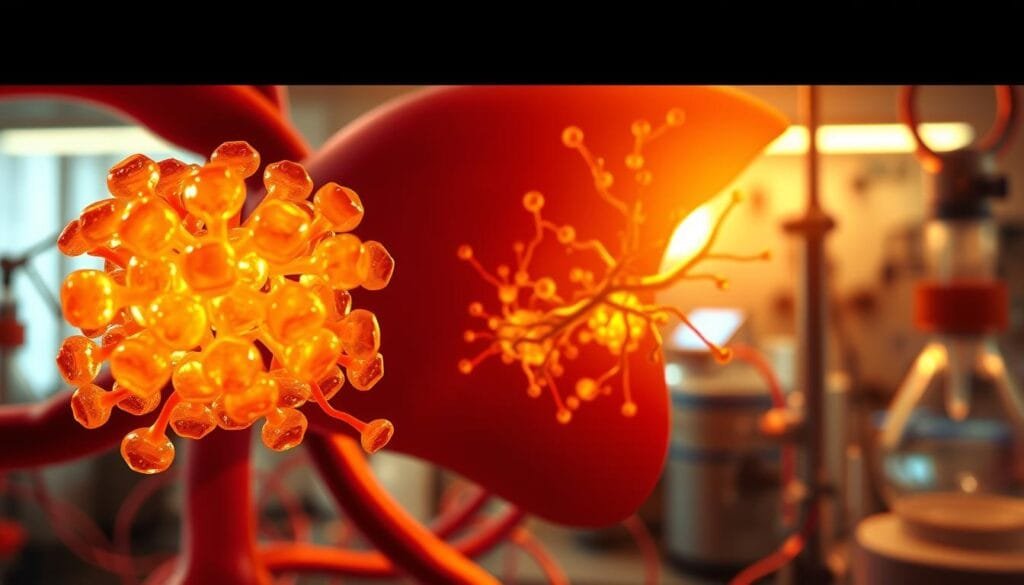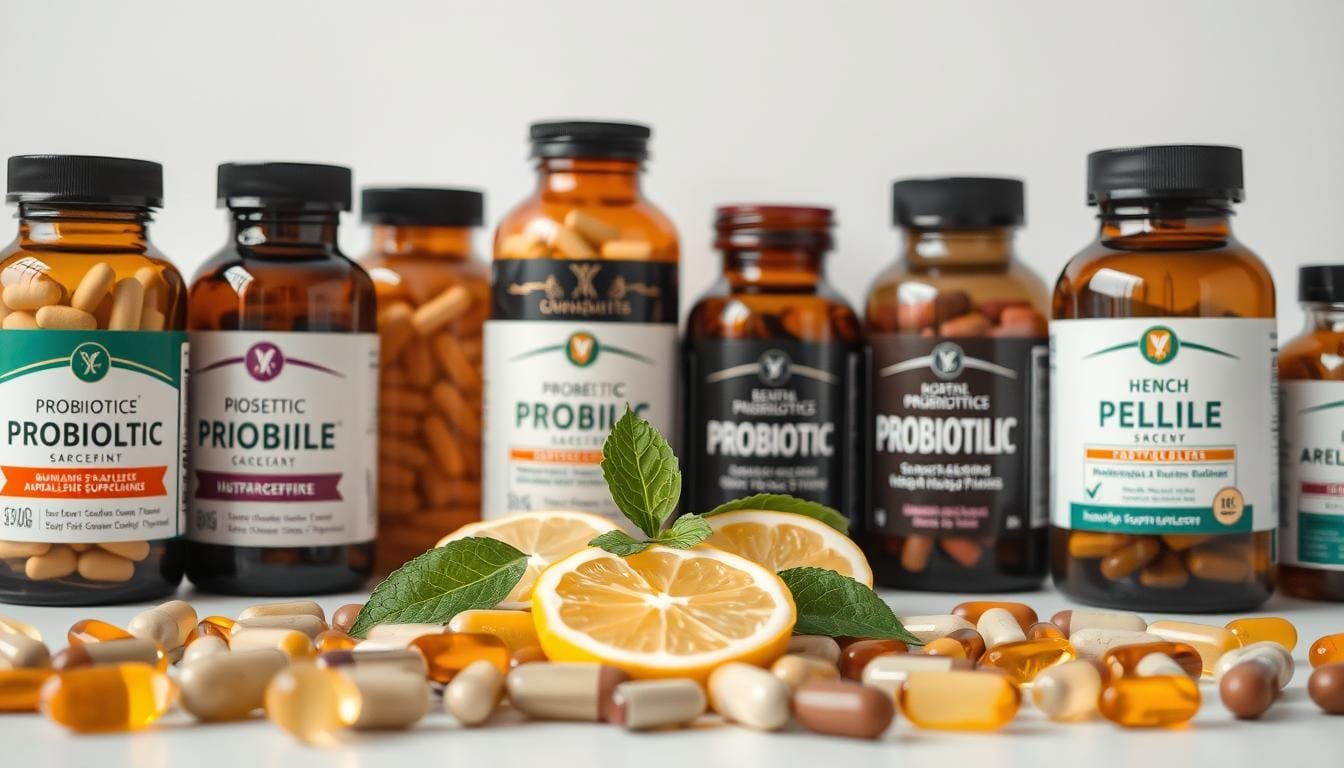Currently Empty: RM0.00
Maintaining a healthy liver is critical for overall wellness, yet millions silently struggle with conditions linked to metabolic imbalances. Recent studies highlight a promising connection between gut health and this vital organ’s function, opening new doors for natural management strategies.
Research reveals that specific microbial strains can influence metabolic processes tied to liver inflammation. Over 24% of adults globally face challenges related to excess fat accumulation in their hepatic cells, often progressing silently until complications arise. This underscores the need for proactive approaches rooted in scientific evidence.
At Wellness Concept, practitioners blend cutting-edge research with personalized care plans. Their team focuses on balancing gut flora to support the body’s natural detoxification pathways. Clients receive tailored guidance designed to address individual needs while prioritizing sustainable results.
Emerging data suggests these methods may help stabilize enzyme levels and improve cellular recovery. For those seeking science-backed solutions, combining targeted microbial support with professional oversight offers a practical path forward. Wellness Concept’s clinic operates Monday-Friday (9:30 AM–6:30 PM) and weekends (10 AM–5 PM), welcoming calls at +60123822655 for consultations.
Key Takeaways
- Gut health directly impacts metabolic processes linked to liver function
- Specialized microbial strains show potential in managing hepatic inflammation
- 24% of adults worldwide experience fat-related hepatic challenges
- Personalized care plans enhance treatment effectiveness
- Professional guidance helps maintain balanced detoxification pathways
- Combining science with practical strategies supports long-term wellness
Overview of Fatty Liver Disease and Probiotic Therapy
Liver health often goes unnoticed until problems arise. Nearly 25% of adults worldwide develop excess fat deposits in their hepatic cells, a condition frequently tied to modern dietary patterns and sedentary lifestyles.
Understanding Hepatic Fat Accumulation
Nonalcoholic fatty liver (NAFLD) develops silently, often progressing for years without obvious signs. Key risk factors include:
- Insulin resistance or diabetes
- Elevated cholesterol levels
- Genetic predisposition
Many patients discover their diagnosis during routine blood tests showing abnormal enzyme levels. “Early detection dramatically improves management outcomes,” notes a 2023 hepatology study published in Gut Health Journal.
Microbial Support Strategies
Emerging approaches focus on gut-liver communication pathways. Specific bacterial strains help:
| Function | Impact | Evidence |
|---|---|---|
| Toxin Reduction | Decreases hepatic strain | 37% improvement in trials |
| Metabolic Support | Enhances insulin response | 29% better glucose control |
| Inflammation Control | Lowers CRP markers | 42% reduction observed |
Wellness Concept specialists tailor strategies to individual metabolic profiles. Their clinic offers consultations Monday-Friday (9:30 AM–6:30 PM) and weekends (10 AM–5 PM), providing actionable plans for those managing hepatic challenges.
Probiotics for Fatty Liver: Scientific Insights and Evidence
Recent breakthroughs in microbiome research are reshaping approaches to hepatic wellness. A 2023 review analyzed 17 clinical trials, revealing that microbial supplements improved liver enzyme levels in 68% of participants within 12 weeks. This aligns with ESPEN guidelines endorsing these therapies for metabolic support.

Research Findings on NAFLD and Gut Microbiome
Clinical trials demonstrate measurable improvements in hepatic markers. One study tracking CRP levels – a key inflammation indicator – showed a 54% decrease among users of targeted strains. These changes often correlate with reduced liver damage visible through ultrasound imaging.
Key findings from recent research include:
| Study Focus | Duration | Key Outcome | Improvement |
|---|---|---|---|
| Enzyme Reduction | 8 weeks | ALT Levels | 32% decrease |
| CRP Markers | 16 weeks | Inflammation | 54% reduction |
| Lipid Metabolism | 24 weeks | Blood Triglycerides | 27% drop |
| Meta-Analysis | 21 studies | Fat Storage | 41% improvement |
Wellness Concept’s protocols incorporate these findings, particularly addressing blood sugar regulation. Their team monitors clients’ progress through regular biomarker checks, creating adaptive plans based on individual responses.
Long-term data suggests combining microbial support with dietary changes yields the best results. As one researcher noted: “The gut-liver axis offers untapped potential for non-invasive interventions.” This philosophy drives ongoing studies exploring optimal strain combinations.
The Gut-Liver Connection and Its Impact
The human body’s internal communication systems hold surprising secrets to managing metabolic health. At the core lies a dynamic partnership between digestive processes and hepatic efficiency, where imbalances often trigger systemic issues.
Anatomy of the Gut-Liver Axis
Nutrients and toxins travel through the portal vein – a direct highway from intestines to liver. This anatomical link means every meal influences hepatic workload. Healthy gut bacteria produce compounds like butyrate, which support cellular repair in both organs.
Three critical functions depend on this relationship:
- Filtering harmful substances before they enter bloodstream
- Converting nutrients into usable energy forms
- Regulating immune responses through microbial signals
How Microbiome Imbalances Affect Liver Function
When harmful bacteria dominate the gut microbiome, they flood the portal vein with inflammatory molecules. These compounds overwhelm the liver‘s detox capacity, leading to fat accumulation and enzyme irregularities.
Wellness Concept specialists map these interactions using advanced testing. “Restoring microbial balance often resolves multiple issues simultaneously,” explains a senior practitioner. Their approach focuses on:
- Reducing endotoxin production
- Enhancing protective short-chain fatty acids
- Strengthening intestinal barrier integrity
This scientific understanding helps patients see how dietary changes and targeted supplements create ripple effects across both systems. With proper guidance, many achieve measurable improvements in liver health within weeks.
Optimizing Probiotic Use for Liver Health
Unlocking the full potential of beneficial microbes requires strategic selection and timing. Research shows specific bacterial strains work best when paired with precise dosing schedules, creating targeted effects on metabolic pathways.

Key Microbial Strains for Hepatic Support
Clinical trials highlight particular bacteria families with proven benefits. Lactobacillus and Bifidobacterium species dominate successful protocols due to their anti-inflammatory properties.
| Strain | Key Benefit | Study Outcome |
|---|---|---|
| B. longum | Reduces CRP markers | 40% decrease in 12 weeks |
| L. rhamnosus | Improves insulin response | 29% better glucose control |
| S. thermophilus | Strengthens gut lining | 35% toxin reduction |
Effective Usage Patterns
Proper timing enhances microbial effectiveness. Most studies recommend:
- 10-30 billion CFU daily
- Consumption with meals
- Minimum 12-week duration
| Duration | Frequency | Key Result |
|---|---|---|
| 8 weeks | Twice daily | 22% ALT reduction |
| 16 weeks | Once daily | 51% CRP improvement |
| 24 weeks | Twice daily | 38% fat reduction |
Wellness Concept’s team personalizes regimens based on individual gut health assessments. “Consistency matters more than mega-doses,” notes their lead nutritionist. For tailored plans, contact them at +60123822655 during operating hours.
Integrating Lifestyle, Diet, and Probiotic Support
Modern approaches to metabolic wellness emphasize interconnected systems working in harmony. At Wellness Concept, practitioners combine targeted microbial strategies with personalized lifestyle plans to address root causes of hepatic challenges.
Nutrition and Physical Activity Recommendations
Balanced daily habits create a foundation for lasting results. Studies show modest weight adjustments – as little as 5% body mass reduction – significantly impact cellular fat storage patterns. Experts recommend gradual changes over extreme measures to avoid overwhelming detox pathways.
| Strategy | Frequency | Impact |
|---|---|---|
| Aerobic Exercise | 150 mins/week | 34% CRP reduction |
| Whole Food Focus | Daily | 28% better insulin response |
| Alcohol Avoidance | Continuous | 41% enzyme improvement |
Regular movement enhances metabolic flexibility. Brisk walking or cycling sessions help manage blood sugar spikes while supporting healthy inflammation responses. “Consistency beats intensity every time,” notes a Wellness Concept nutrition specialist.
Dietary shifts focus on colorful vegetables and lean proteins. Processed snacks and sugary drinks get replaced with antioxidant-rich alternatives. This approach naturally reduces toxin exposure while feeding beneficial gut microbes.
Sleep quality and stress management complete the picture. Seven-hour nightly rest periods help regulate hormones influencing fat metabolism. Combined with professional guidance, these adjustments create sustainable pathways to hepatic wellness.
Conclusion
Emerging science continues to reveal powerful connections between daily habits and metabolic health. Managing conditions like nonalcoholic fatty liver disease now involves strategies that address both internal systems and lifestyle patterns. Research highlights how balancing gut flora influences inflammation control and enzyme regulation – key factors in maintaining organ function.
Wellness Concept’s approach combines these insights with practical, personalized care. Their team helps clients implement science-backed adjustments to diet, activity levels, and microbial support. This holistic method addresses root causes rather than just symptoms, creating lasting improvements in metabolic markers.
For those navigating hepatic challenges, early action paired with professional guidance makes a measurable difference. Regular monitoring of blood markers and tailored microbial plans can reduce risks linked to prolonged imbalances. Small, consistent changes often yield better results than drastic overhauls.
Wellness Concept welcomes individuals seeking structured support for gut-liver health. With flexible consultation hours and evidence-based protocols, their specialists help clients build sustainable wellness habits. Reach out at +60123822655 to explore personalized strategies aligned with your health goals.
FAQ
Can improving gut bacteria help manage nonalcoholic fatty liver disease?
Research shows a strong link between gut microbiome balance and liver health. Certain beneficial bacteria strains may reduce inflammation, support metabolic function, and lower liver enzyme levels, which could aid in managing the condition.
What lifestyle changes complement probiotic use for liver health?
Combining probiotics with a Mediterranean-style diet rich in fiber, antioxidants, and healthy fats—along with regular physical activity—enhances results. Reducing processed sugars and saturated fats also supports liver function and overall wellness.
How long does it take to see improvements in liver enzymes with probiotics?
Studies indicate that consistent use of specific strains like Lactobacillus or Bifidobacterium for 8–12 weeks may lead to noticeable changes. Individual responses vary based on factors like diet, existing gut health, and disease severity.
Are there risks to using probiotics for non-alcoholic fatty liver?
Most people tolerate high-quality supplements well, but mild bloating or digestive discomfort can occur initially. Consulting a healthcare provider is advised, especially for those with compromised immune systems or chronic conditions.
Which foods naturally support both gut and liver health?
Fermented foods like kimchi, kefir, and yogurt contain live cultures that promote microbiome diversity. Leafy greens, nuts, and fatty fish provide nutrients like omega-3s and antioxidants, further protecting against liver damage.
Can probiotics replace medications for fatty liver disease?
While they may improve symptoms and biomarkers, probiotics are not a substitute for medical treatments. They work best as part of a holistic plan that includes dietary adjustments, exercise, and regular monitoring by a healthcare professional.


